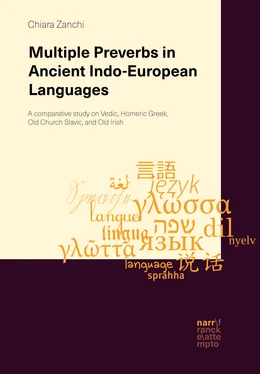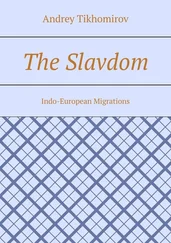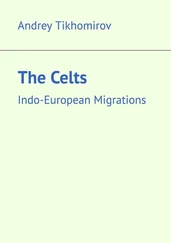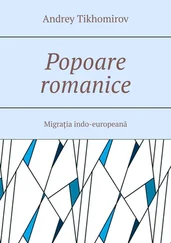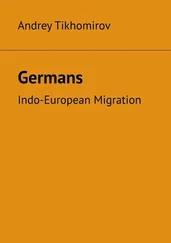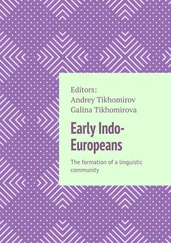1 ...8 9 10 12 13 14 ...21 A second major critical theme expresses skepticism as to whether the series of sub-processes that are grouped under grammaticalization (on which cf. Section 2.2.3) really deserve to be treated separately as special, i.e. being assigned their own label, meriting dedicated conferences, textbooks, and so forth, with respect to other (clusters of) changes with which historical linguistics is concerned. This also relates to the issue of when exactly grammaticalization happens. For example, when does grammaticalization occur in the development of the Romance future of the type of Italian canterò ‘I will sing’ from Vulgar Latin cantare habeo ‘I have to sing’ (cf. Section 2.2.3.2)? Is it when the locution cantare habeo comes to show a conventionalized future meaning even without concomitant phonetic reduction? Or rather, are phonetic reduction and univerbation necessary ingredients for grammaticalization? Or, should these two processes (semantic change and univerbation) even be regarded as two distinct grammaticalizations, though they result in a single one grammatical item and category?
Joseph’s (2011) elaboration on theme (b) directly leads us to his point (c), in which the author further emphasizes that “much more goes on in language change than just the often cited movement of lexical/somewhat-grammatical to (more) grammatical that characterizes grammaticalization” (Joseph 2011: 198). Joseph goes to discuss a number of morphological developments that cannot be subsumed under the grammaticalization rubric. These are schematized below:
1 derivational morphology > derivational morphology (e.g. resegmentation of morpheme boundaries);
2 inflectional morphology > inflectional morphology (e.g. remaking of verbal endings based on other endings);
3 inflectional morphology > derivational morphology (e.g. reanalysis of an inflectional ending as part of the stem onto which verbal endings are further added, as in the instances of the so-called Watkins’ Law; cf. Arlotto 1972; Collinge 1985).
The last line of criticism that I discuss here is one of the cornerstones of grammaticalization, specifically the so-called “unidirectionality hypothesis”: changes falling under the rubric of grammaticalization always go from less grammatical to more grammatical (Rosenbach 2004: 73; Börjars & Vincent 2011). From Givón (1971) onward, different works fairly strictly embraced the unidirectionality hypothesis, including Lehmann (1995[1982]: 16), Hopper & Traugott (1993: Chapter 5), Traugott (2001), Heine (2003), and Brinton & Traugott (2005: Chapter 4.3).
In usage-based models, unidirectionality is motivated by frequency: “Changes related to increases in frequency all move in one direction and even decreases in frequency do not condition reversals: there is no process of de-automatization or de-habituation, subtraction of pragmatic inferences, etc. Once phonetic form and semantic properties are lost, there is no way to retrieve them. Thus grammaticization [i.e. grammaticalization] is unidirectional” (Bybee 2008: 348). Other functionalist approaches also suggest that social factors drive grammaticalization, such as “the invisible hand” (Keller 1990), the communicative goal of expressiveness, and speakers’ will to speak in such a way that they are noticed (so-called “extravagance” in Haspelmath 1999: 1043) and later on imitated by other speakers (so-called “conformity”). By contrast, formalists explain unidirectionality based on some universal principles relating to the principle of Economy (cf. van Gelderen 2004, 2011), including that of “grammar optimization”, that is, the elimination of unmotivated grammatical complexity or idiosyncrasy (Kiparsky 2011).
Evidence against the unidirectionality hypothesis gathered in recent decades (e.g. among many others Ramat 1992; Haspelmath 2004; Willis 2007; Norde 2009; Kiparsky 2011) was seized upon to argue against the existence of grammaticalization as a distinct and pervasive process of linguistic change, precisely because of the said occurrence of many counterexamples (e.g. Janda 2001; Joseph 2001; Newmeyer 2001).
As in the case of grammaticalization (cf. Section 2.2.2), there exist wider and narrower definitions for the opposite process, often called “degrammaticalization”, “antigrammaticalization” or “countergrammaticalization”. For example, Newmeyer (2001: 205) considers an instance of degrammaticalization any increase in lexical content or morphological independence. In a more precise way, Norde (2010: 126) defines degrammaticalization as a change that affects several linguistic layers: “Degrammaticalization is a composite change whereby a gram in a specific context gains in autonomy or substance on more than one linguistic level (semantics, morphology, syntax, or phonology).” This view is shared by other scholars, including Willis (2007: 273), who offers a catalogue of different linguistic changes operating at different linguistic levels that can be ascribed to degrammaticalization: (i) phonological strengthening, (ii) change rightward along the cline: affix > clitic > independent word; (iii) categorial reanalysis from grammatical to lexical; (iv) metaphorical shift from abstract to concrete; (v) pragmatic inferencing from abstract to concrete. Importantly, changes (i)–(v) mirror their opposite counterparts in grammaticalization. The idea that degrammaticalization must be described in parallel to grammaticalization is common to other scholars. Haspelmath (2004: 27) for example writes as follows: “By this [i.e. antigrammaticalization] I mean a change that leads from the endpoint to the starting point of a potential grammaticalization and also shows the same intermediate stages.”
2.2.5. Grammaticalization and lexicalization
Within the literature on grammaticalization (and degrammatilicalization), a central issue is assessing whether a linguistic change constitutes a real instance of grammaticalization, or whether it can be better captured within some alternative fields of analysis.
For example, degrammaticalization of the type (iii) (cf. Section 2.2.4), that is, the categorial reanalysis from grammatical to lexical, implies new entries in the lexicon. Thus, what is the point in differentiating between type (iii) of degrammaticalization and “lexicalization”, which, according to some definitions, includes any type of lexical enrichment (cf. e.g. Hopper & Traugott 1993: 127; van der Auwera 2002; Lightfoot 2011: 438ff.)?1 Thus, the first reason for ambiguity as regards the lexicalization is that, since the beginning of grammaticalization studies (Kuryłowicz 1975[1965]: 52), linguists have regarded lexicalization as the reverse of a grammaticalization. One way of distinguishing degrammaticalization of the (iii) type from lexicalization is emphasizing that degrammaticalization must mirror the same steps as those of grammaticalization in reverse order, while this is not true of lexicalization.
Moreover, as pointed out by Anttila (1989[1972]: 151), any new item entering the lexicon undergoes lexicalization, including those that instantiate developments whereby they increase their grammaticality (e.g. open-class noun > closed-class adverb). This observation somewhat anticipates the second reason for confusion between grammaticalization and lexicalization: the fact that most functionalist scholars recognize that lexicon and grammar are not two discrete categories, but rather they operate on a continuum (cf. Sections 2.1 and 2.2.3.2) . Along this continuum, lexical words also contain grammatical information and, conversely, grammatical words also include some lexical meaning. In this view, both features of grammaticality and lexicality are gradual, and a certain form can be either more/less grammatical or more/less lexical (cf. e.g. Lehmann 2002; Hopper & Traugott 2003; Fischer 2008; Trousdale 2008a, 2008b).
Читать дальше
